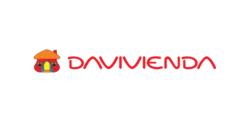While some believe that innovation is a waste of time when facing a crisis, the times of crisis may be the ones in which innovation is the most necessary.
The outcome of most ideation processes is a list – a list of ideas, solutions, insights or alternatives. More often than not, people are focused on the number of items on that list. However, since that number can be easily manipulated by both the facilitator and the participants, it does not accurately reflect even the quantity of the outcome, let alone its quality.
But even if we do make an honest attempt to assess the quality of such a list, we could not get the full picture – first and foremost because we lack a critical perspective – that of time. When we left Austin, Texas, after a 10-day innovation process with Univation, we knew that the list we generated was good, or at least considered good by our client. But the true value of that list became clear only a few years later… Univation is a leader in an industry most people have never heard of – polyethylene process technology. Simply put, if you want to start producing polymers – they are the guys you turn to for the technology.
When Univation approached SIT in 2004 they wanted to “solidify their position” as market leaders (what would you expect from a company that is a joint venture between Exxon-Mobile & Dow Chemicals?). To address this broad goal we conducted a process that touched upon a wide variety of issues – from the molecular aspects of the technology, to the sales and marketing strategies of the company.
While Univation successfully applied many of the ideas around strategy, marketing & organizational structure, it is the list of technology-related ideas that turned out to be “the gift that keeps on giving.” In the words of Greg Stakem, Vice President of R&D at Univation, “SIT helped create a catalogue of “technology improvement” solutions that the company uses to solve some of its more vexing challenges. We’ve been routinely going back to that list when we’ve had problems. The list essentially represents various ways to make significant changes in the process technology.”
It is “standing operating procedure” for SIT facilitators to encourage clients to routinely revisit the outcomes of a project, and not to be satisfied with implementing those ideas that are most appropriate at one particular point in time. It is very satisfying to see the effect of that recommendation in practice…


